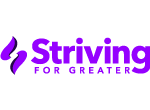What Is Trypophobia?
Trypophobia is a fear of or aversionxxto tightly packed patterns of holes or other similar patterns, such as those found in honeycombs, sea sponges, or soap bubbles. If you have trypophobia, these sights might make you feel panicky, shaky, and sick.
The name for this problem comes from the Greek words “trypa,” which means hole, and “phobos,” which means fear. But the term doesn’t date back to ancient Greece. The term “Trypophobia” reportedly first appeared on a web forum in 2005.

Scientists still don’t know much about trypophobia, and it’s not yet recognized as a mental disorder.
How common is trypophobia?
It’s difficult to know for sure how common trypophobia is. In one study, researchers found that 18% of adults had some degree of trypophobia. Some studies show that even some young children are disturbed by images of clustered patterns.
Like other phobias and anxiety disorders, studies show the odds of trypophobia may be slightly higher in females compared to males. However, more research is needed to know exactly how this phobia affects different genders or groups of people.
Trypophobia Symptoms
The symptoms of trypophobia look a lot like a panic attack. You might have:
Nausea
Shaking
Shortness of breath
Rapid breathing
Fast heartbeat
Sweating
Chills
Choking or dry mouth
Intense feeling of disgust, revulsion, or terror
Pale skin
Trypophobia Triggers
Common things that can trigger trypophobia include:
Holes or pebbles in concrete
Air holes in a slice of bread
Patterns in the frosting of a cake or pie
The head of a lotus flower
The holes in an old hockey mask
Skin problems such as sores, scars, and spots
Spotted animals
Shower heads
LEDs in traffic lights
Honeycombs
Strawberries
Coral
Seeded breads
Swiss cheese
Pomegranates
Sponges
Trypophobia Causes
Researchers have a few ideas about what causes trypophobia.
The powerful reaction might be a way to protect yourself from danger. Some of the most poisonous animals on the planet — such as the king cobra, puffer fish, and poison dart frog — have hole-like patterns on their skin. Those patterns are like the ones that bother people who have trypophobia.
Deadly diseases such as measles and smallpox, as well as infection with parasites, cause spotty skin rashes. Trypophobia could be a reaction that humans have developed to avoid getting sick.
It’s also possible that the images themselves trigger trypophobia. Some people may be more sensitive to the mix of light and dark in pictures of holes. Researchers say that hole-like patterns have a type of visual energy that can cause an unpleasant reaction.
Trypophobia Diagnosis
Doctors don’t know a lot about trypophobia, and it can be hard to diagnose. A psychologist or primary care doctor will ask about your symptoms and how they affect your everyday life.
One group of researchers created a list of 17 questions called the trypophobia questionnaire. It asks people to rate their discomfort on a scale from 1 (“not at all”) to 5 (“extremely”) when they see potentially triggering images.
A few self-tests are available online, including the Implicit Trypophobia Measure. Before you take one of these tests, remember that they include images that might be disturbing for you.
Trypophobia Treatment
Because trypophobia isn’t a true disorder, there’s no set treatment for it. And while there isn’t a cure for any phobia, there are steps you can take to gain control over what triggers your stress and anxiety.
Some of the top treatments for trypophobia are:
Exposure therapy (desensitization). Not everyone can tolerate exposure therapy because it means you have to do something that upsets you. But if you have a specific phobia, there’s a good chance it’ll help you.
Here’s how it works: Your therapist gradually exposes you to whatever causes you fear or disgust. Then, they give you tools to manage anxious thoughts, feelings, or physical reactions that come up during therapy. You repeat this with multiple sessions until you feel more comfortable around your triggers.
Exposure therapy for trypophobia may include:
Thinking about your trypophobia triggers
Looking at pictures or videos with clusters of holes
Holding a sponge or something else with repeating patterns
Cognitive behavioral therapy (CBT). This is a type of talk therapy that can help you change your thoughts and perceptions about what causes your fear and aversion. You also learn healthy ways to deal with the thoughts and feelings that trypophobia triggers.
Relaxation techniques. You can learn how to calm your mind and body in stressful situations. Some tools that may help you manage trypophobia include:
Guided imagery or visualization
Deep-breathing exercises
Progressive muscle relaxation
Yoga or meditation
Mindfulness
Biofeedback
Medication. Antidepressants or other drugs may lessen overall symptoms of anxiety or panic for some people. You may need to take medication every day or only in situations where you know you’ll be triggered.
Medications used to treat phobias include:
Antidepressants. Some studies show selective serotonin reuptake inhibitors (SSRIs), such as sertraline (Zoloft), may ease anxiety for people who have phobias.
Beta-blockers. Commonly taken for stage fright, these drugs block adrenaline. That’s the fight-or-flight hormone that raises your heart rate and blood pressure when you get scared or nervous. Your doctor may give you beta-blockers to take regularly or only when you know you’ll be around something that might trigger your trypophobia.
Sedatives. Fast-acting drugs such as benzodiazepines can help you feel calm. But they’re not a good long-term solution to anxiety in general or for specific phobias. They can be addictive, and you shouldn’t use them if you have a history of drug and alcohol misuse.
Self-care. Talk therapy and medication can go a long way in helping you manage trypophobia. But there are other things you can do on your own to support your well-being:
Get enough sleep each night. For most people, that’s at least 7-9 hours a night.
Eat a nutritious diet with plenty of fruits, vegetables, and whole grains.
Limit ultra-processed foods high in sugar. Blood sugar spikes may feel like anxiety.
Get regular exercise to boost serotonin and other anxiety-reducing brain chemicals.
Lessen caffeine if it makes you feel jittery.
Focus on your successes, even the small ones.
Ask friends and family to help you face your fears.
Put what you learn in therapy to good use in real life.
Join a support group for people with trypophobia or other phobias.


